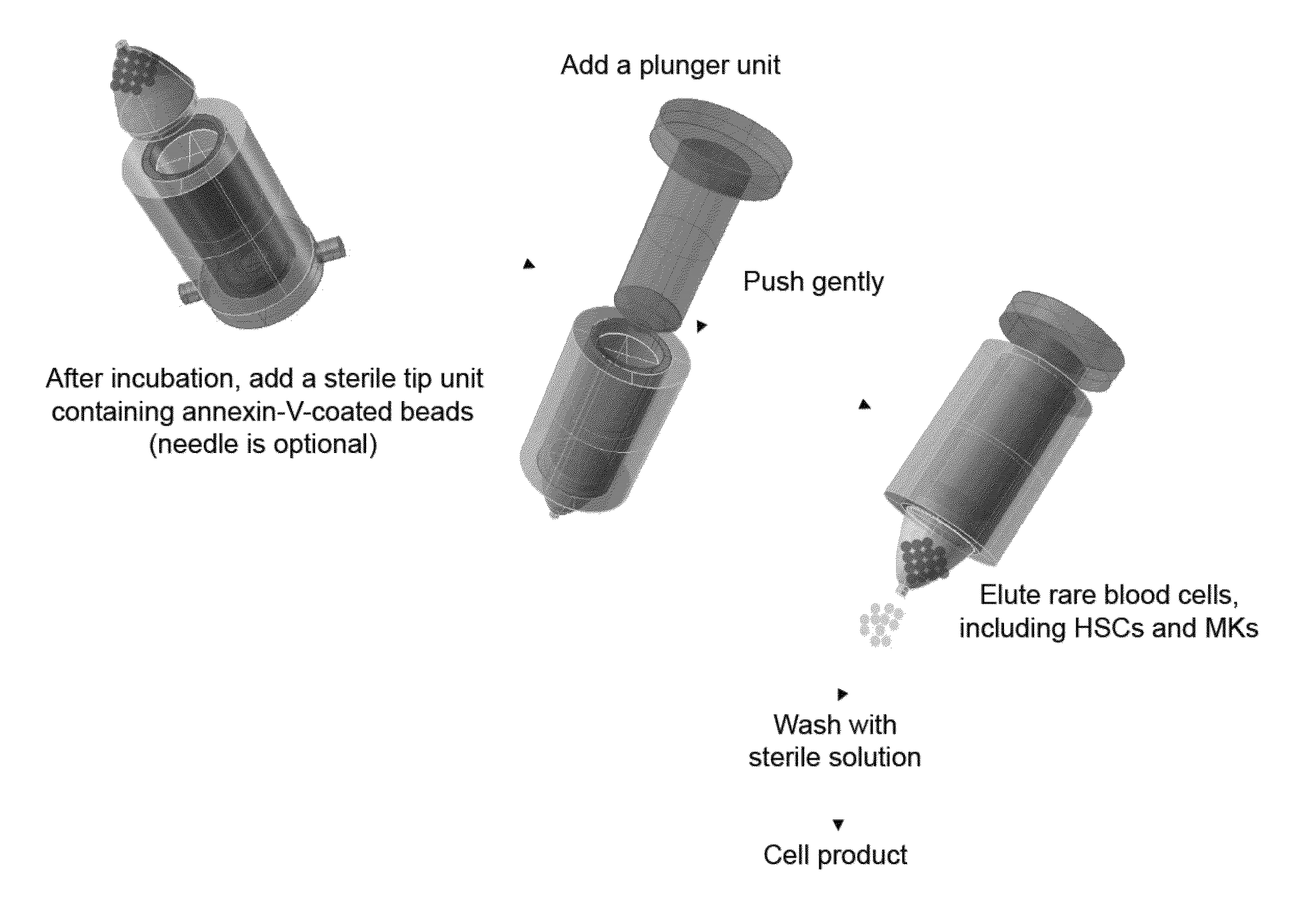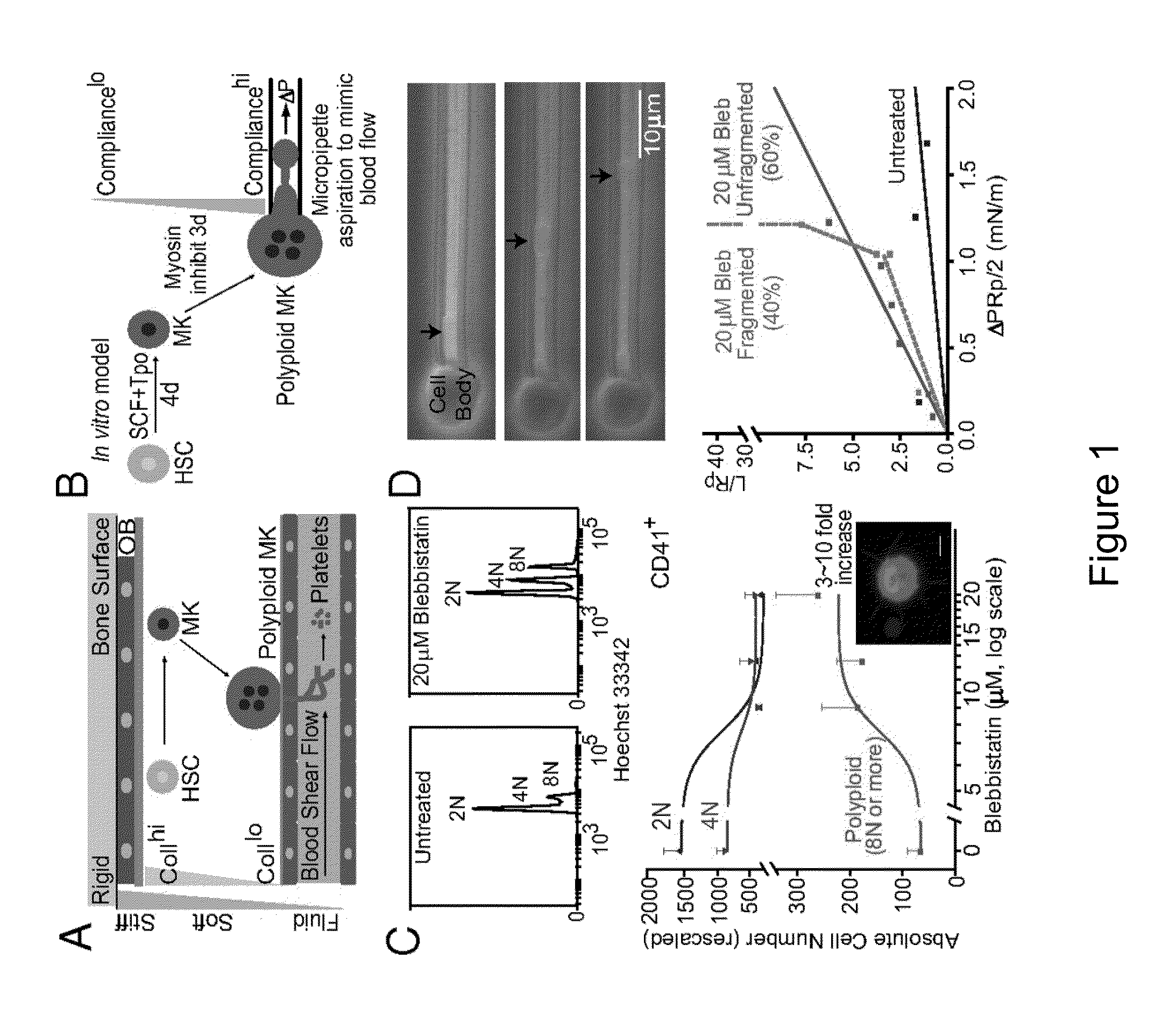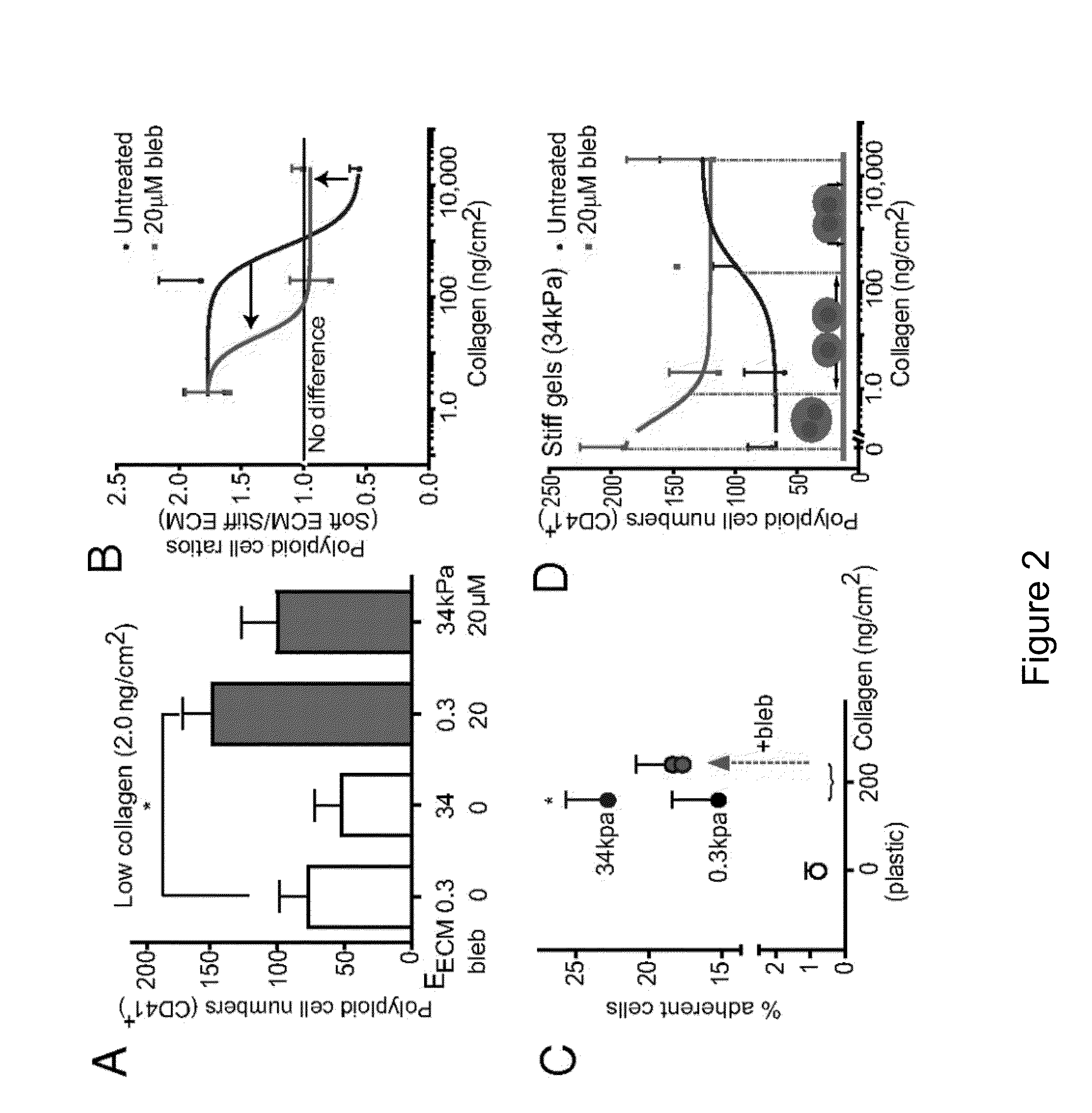Bioreactor for Isolation of Rare Cells and Methods of Use
- Summary
- Abstract
- Description
- Claims
- Application Information
AI Technical Summary
Benefits of technology
Problems solved by technology
Method used
Image
Examples
experimental examples
[0138]The invention is further described in detail by reference to the following experimental examples. These examples are provided for purposes of illustration only, and are not intended to be limiting unless otherwise specified. Thus, the invention should in no way be construed as being limited to the following examples, but rather, should be construed to encompass any and all variations which become evident as a result of the teaching provided herein.
[0139]Without further description, it is believed that one of ordinary skill in the art can, using the preceding description and the following illustrative examples, make and utilize the compounds of the present invention and practice the claimed methods. The following working examples therefore, specifically point out the preferred embodiments of the present invention, and are not to be construed as limiting in any way the remainder of the disclosure.
example 1
Myosin-II Inhibition and Soft 2D Matrix Maximize Multinucleation and Cellular Projections Typical of Platelet-Producing Megakaryocytes
[0140]Cell division, membrane rigidity, and strong adhesion to a rigid matrix are all promoted by myosin-II. Thus, it is predicted that multinucleated cells with distended membranes—typical of megakaryocytes (MKs)—result from low myosin activity in cells on soft matrices. Paradoxically, myosin mutations lead to defects in MKs and platelets. As described herein, reversible inhibition of myosin-II, sustained over several cell cycles, produce 3- to 10-fold increases in polyploid MK and a number of other cell types. Even brief inhibition generates highly distensible, proplatelet-like projections that fragment readily under shear, similar to what is seen in platelet generation from MKs in vivo. The effects are maximized with soft 2D collagenous matrices, like the perivascular niches in marrow, rather than rigid 3D matrices, like bone. Although multinucleat...
example 2
Role of Myosin-II in Early Hematopoietic Stem Cell and Progenitor Differentiation
[0203]Activation of HSCs and progenitors in a bone marrow niche involves cytokinesis and motility processes that normally require cytoskeletal contractility. Here, enrichment of long-term human HSCs by up to 20-fold from a mixed culture of CD34+ human bone marrow cells is achieved by inhibiting NMM-II which blocks cytokinesis of rapidly proliferating progenitors. HSC pathways are largely preserved in culture as elaborated by high-accuracy titration microarray analyses of ˜1000 recognized hematopoietic genes that also reveal transient expression of NMM-IIB, an isoform previously not described in HSCs. NMM-IIB has been implicated in firm attachment, consistent with anchorage in a niche, whereas constitutive NMM-IIA is regulated in HSCs not at the level of expression, but by tail phosphorylation that deactivates this isoform. Functional analyses demonstrate key roles of NMM-II in cortical rigidity and mech...
PUM
| Property | Measurement | Unit |
|---|---|---|
| Pressure | aaaaa | aaaaa |
| Pressure | aaaaa | aaaaa |
| Current | aaaaa | aaaaa |
Abstract
Description
Claims
Application Information
 Login to View More
Login to View More - R&D
- Intellectual Property
- Life Sciences
- Materials
- Tech Scout
- Unparalleled Data Quality
- Higher Quality Content
- 60% Fewer Hallucinations
Browse by: Latest US Patents, China's latest patents, Technical Efficacy Thesaurus, Application Domain, Technology Topic, Popular Technical Reports.
© 2025 PatSnap. All rights reserved.Legal|Privacy policy|Modern Slavery Act Transparency Statement|Sitemap|About US| Contact US: help@patsnap.com



